Mungo National Park, the remote gem of Australian outback stuffed with a bizarre lunar landscape formed by erosion. The entire place is on the bottom of ancient dried Willandra lakes. The area is rich for aboriginal history roughly 40,000 years old also part of the UNESCO World Heritage. Let´s make a trip to this very arid, private and also unknown place of Australia.
Introduction of Mungo National Park
Not so many people know about this hidden gem of Australian Outback. At least it was my feeling when I came to this wast, arid and also remote area. That time I met on the gravel road leading from Mildura to Mungo National park just one road train.
Mungo national park is a protected area by the government and is located in south-western New South Wales in eastern Australia. It´s over 500 kilometers of driving from Adelaide the capital of South Australia. It´s also around 600 km from Melbourne or 1000 km from Sydney. That´s probably the reason why it´s relatively unknown, but it doesn´t mean it´s boring.
The Mungo National Park is not only a place for bizarre natural formation seekers, but also for history lovers. The entire park is located at the bottom of the dried lakes which were in past abundant sources of life. Entire park with an area of 2,400 square kilometers (930 sq mi) is a part of the UNESCO World Heritage.
Best time to go there
You can visit Mungo national park every part of the year. Personally I´d rather recommend visiting during Australian winter months (May – September). Despite it can be a bit chilly in the Australian Outback and temperatures can drop to 5°C. Normally temperatures are around comfortable 10-15°C. The reason for this recommendation is simple. While we visited the Mungo national park in Australian summer in December the temperature 45°C. It´s really not so comfortable for any outdoor activity.
Another restrictive parameter for visiting of the Mungo national park is an actual precipitation forecast. Due to a relatively long drive on the “red” gravel road by car. Make sure to check in advance the actual weather forecast. In case of rain which is actually not so common, according to locals the road can become one huge mud pool within minutes. With 2WD it can become impassable in some periods. Months with the most rainfall are August and September, but with only a 13% chance of rain. The average monthly rainfall in those months is only 22mm which I don´t consider as a big risk.
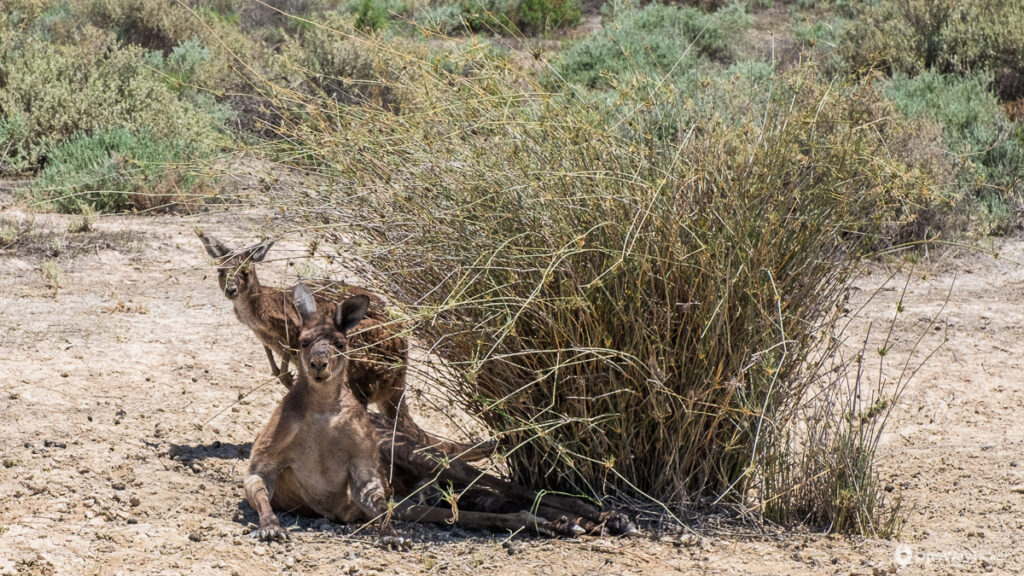
How to get to Mungo National Park
To reach Mungo National park You will need definitely a personal car. There are no busses from any towns around. Maybe in Mildura, there can be some private buses managed by tour operators, but normally very limited. The absolute majority of visitors are coming by personal car. Always rather take the 4WD car from the rental company as it´s pretty big fun to drive unsealed Australian Outback roads with 4WD.
Adelaide: Around 530km and over 6h drive.This is the best option regarding distance and effort. Drive from Adelaide towards Gawler, then continue on the A20 road via Blanchetown and Barmera to Mildura. From Mildura, You have to drive north where the fun part starts. The gravel unsealed road is almost 100 kilometers between Mildura and Mungo National Park. On some days You will be completely alone here. Make sure You buy enough freshwater in Mildura. The desert can be very hot and arid with no villages on the way to get water.
Melbourne: Around 605km and almost 8h drive.From Melbourne to Bendigo use M79 highway. From Bendigo towards Mildura on A79 and of course from Mildura the same journey as described above.Sydney: Almost 1000km with 12h drive.The most annoying and boring journey to Reach Mungo National Park is from Sydney. The first part through mountains on M31 highway is ok, but from Waga Waga on A28 road is only a flat and boring ride in an Australian Outback.
The fee to enter the park is imposed and it´s 8$ per vehicle per day.Plenty of time to enjoy wild 4WD driving in Mungo NP
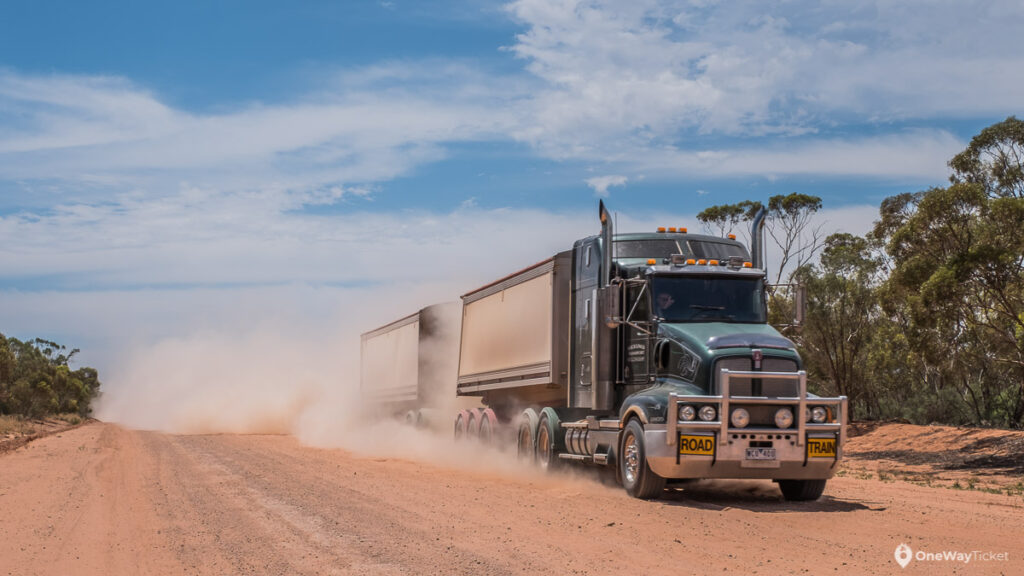
History of the Mungo National Park
A long time ago in the ice age, there was a huge abundant system of lakes Willandra. The early settlement was having quite a nice life like Fishing, farming as well as rich social life. That was the picture of the place about 40 000 years ago. Around this time also the remains of Mungo Man and Mungo Lady, the oldest human remains discovered in Australia. These were the oldest known humans who have been ritually cremated.
Another 10.000 years later when the climate became warmer lakes started evaporating. 20.000 years ago became dry for the first time. After many years after in 1969, Dr. Jim Bowler discovered bodies of Mungo Woman, a partially cremated body. Since that time the archeological importance of the area skyrocketed. Mungo National Park was created in 1979 and became part of the UNESCO World Heritage in 1981.
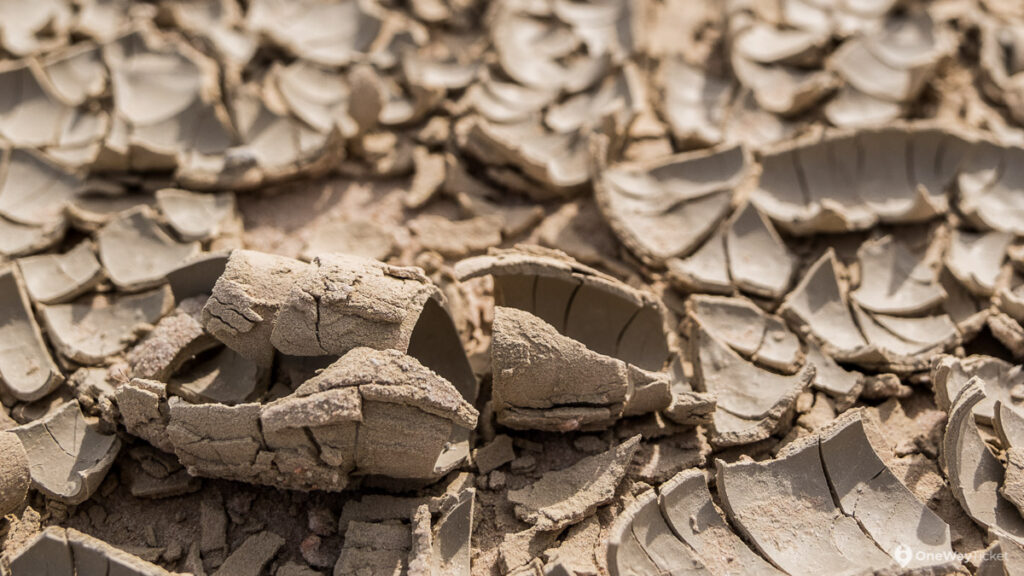
Main attractions of Mungo National Park
There are plenty of interesting things to see and if You loke privacy and untraditional landscapes. Spending a day or two in the quiet desert just with lizards and kangaroos can be an enriching experience. The Mungo natural park consists of 2,400 square kilometers (930 sq mi). And offers plenty of activities like hiking, cycling, camping and also sunset-watching of BBQing.
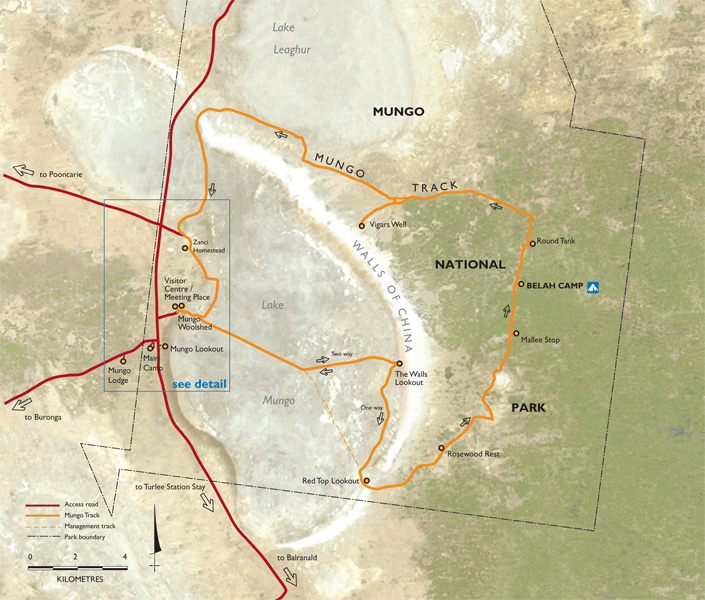
The Mungo track
This is about 70 kilometers loop around the Mungo National park in the Australian outback on the unsealed gravel road. The entrance to the park is charged 8$ per vehicle per day. This loop track is taking the visitor around the most interesting places in the park. You can choose either to cycle the track which can be split into two days or drive by car. The track is only one-way so it can be done only anti-clockwise.
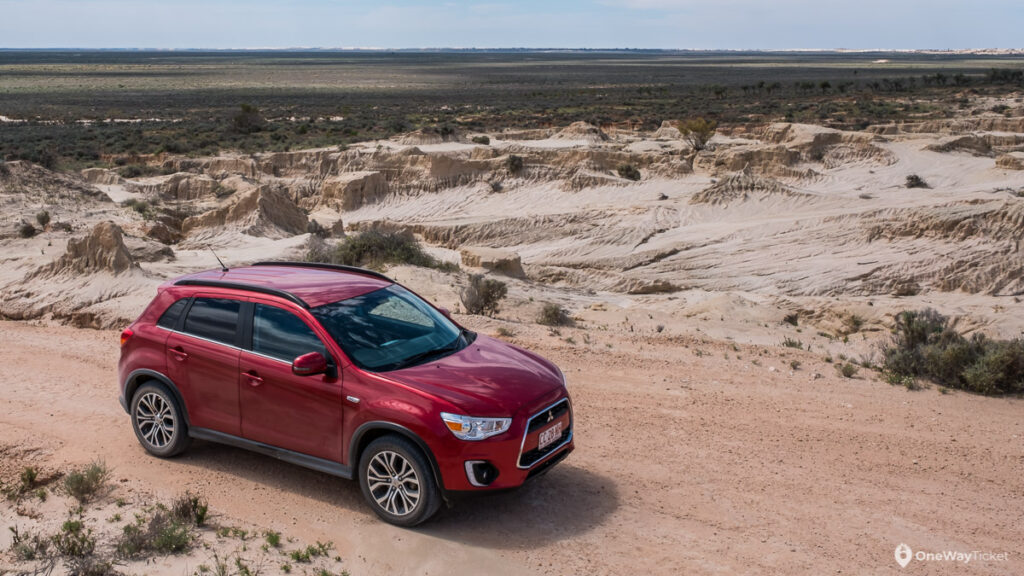
Walls of China
The breathtaking strip of white sand dunes creating different sand formations. All those landscapes were formed by the instrumentality of water and wind erosion and time. There is a short 1-2 hours boardwalk taking visitors to the most interesting places and discovering the best alien landscapes. The Walls of China Boardwalks are open to public access, however, access beyond the boardwalk is available only with a tour. Despite this limitation, I was completely alone and I could enjoy some time around the formations. If You decide to do so be careful not to damage any of those fragile formations. It´s a must-see place while in Mungo National Park, especially during the sunset. Colors of the sand turn into deep orange while the sun goes down.
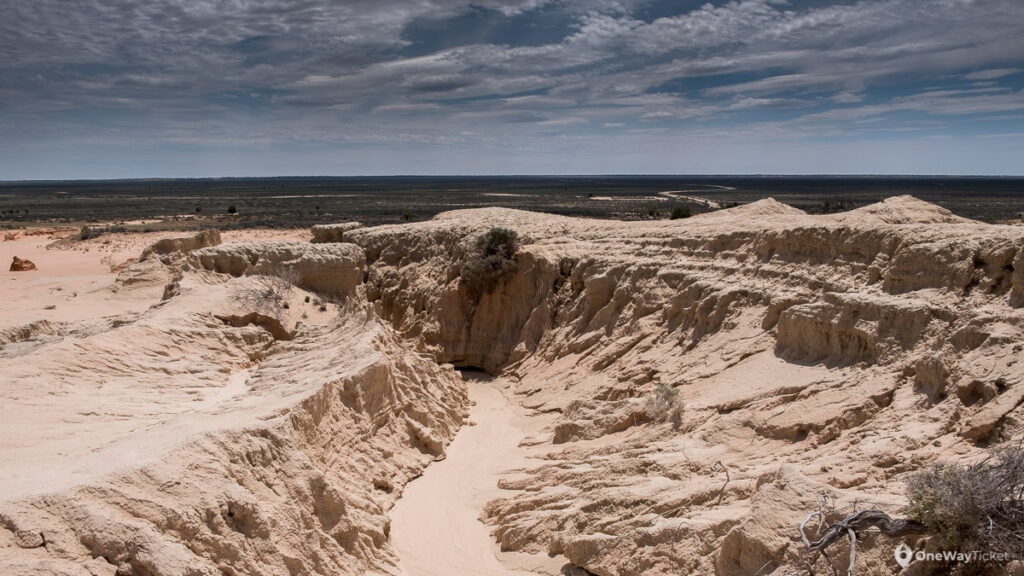
Red Top Lookout
Continuing down south the Mungo track the next stop is a Red Top lookout. There is also a short boardwalk trip for about 30 minutes. The path will reveal formations sculpted over time in sand and clay as well as imposing otherworldly formations. It´s a great place on the top of a small hill just to overcome the high sand ridge. There are amazing views around the entire lake from this place as well as a great place for magnificent pictures.
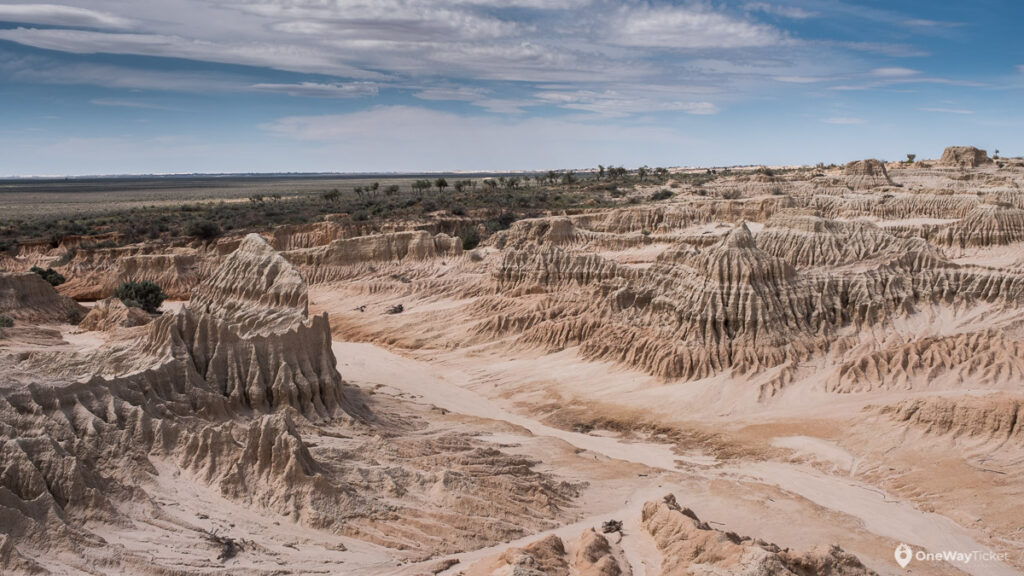
Mallee Walk
Venture further into the park and explore grassland nature trails. The track will escape the arid lake bed and enter the forest. The red road is contrasting with green trees which are creating comfortable shadows. Enjoy a small walk around eucalypts and another diverse flora. You can find a camp overnight in the same forest as well as see kangaroos, emus and outback birds.
Vigars well
Picnic area with a small pond which is the only source of the water for animals around. I personally met some kangaroos, dingo to come for water and couple of parrots. In my eyes, the place is maybe the second-best attraction in the Mungo National Park. Take the opportunity to ascend to the sand dunes and walk around. It´s really amazing to see white dunes closing footprints just after a short time. Quite scary to imagine how would feel people lost in the desert at this place. The temperatures here can rise easily over 45 °C in an Australian Outback summer.
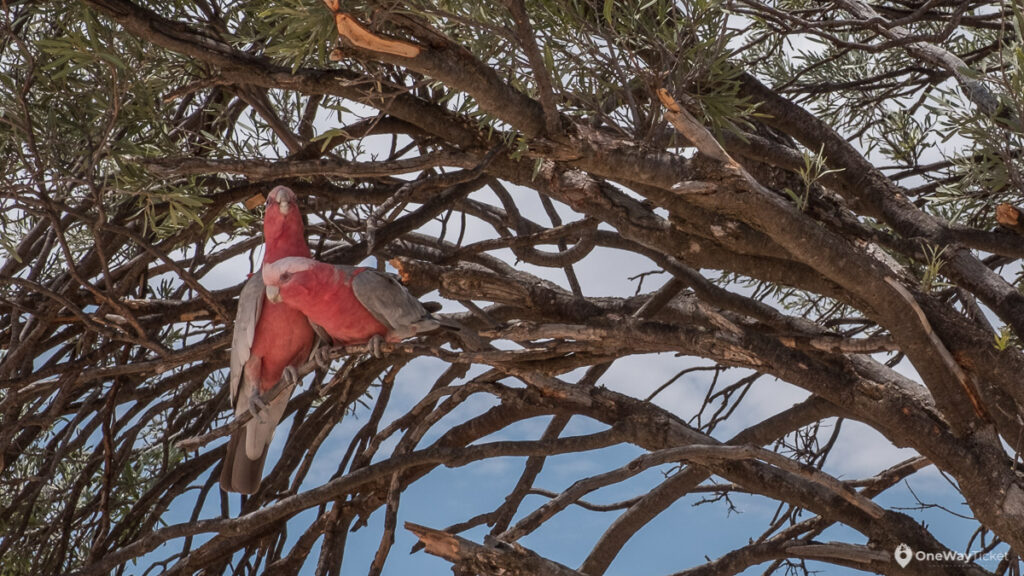
Farewell to Australian Outback
There are not so many places like this in the world with such bizarre formations. There are still some so if You love Mungo National park I can also recommend you visiting the Atacama Desert and its lunar landscapes. If interested read our post: Atacama desert Expedition (with map and photos)
Did You enjoy the visit of Mungo NP and its history? If yes, let us know in the comments below or share Your experience here.


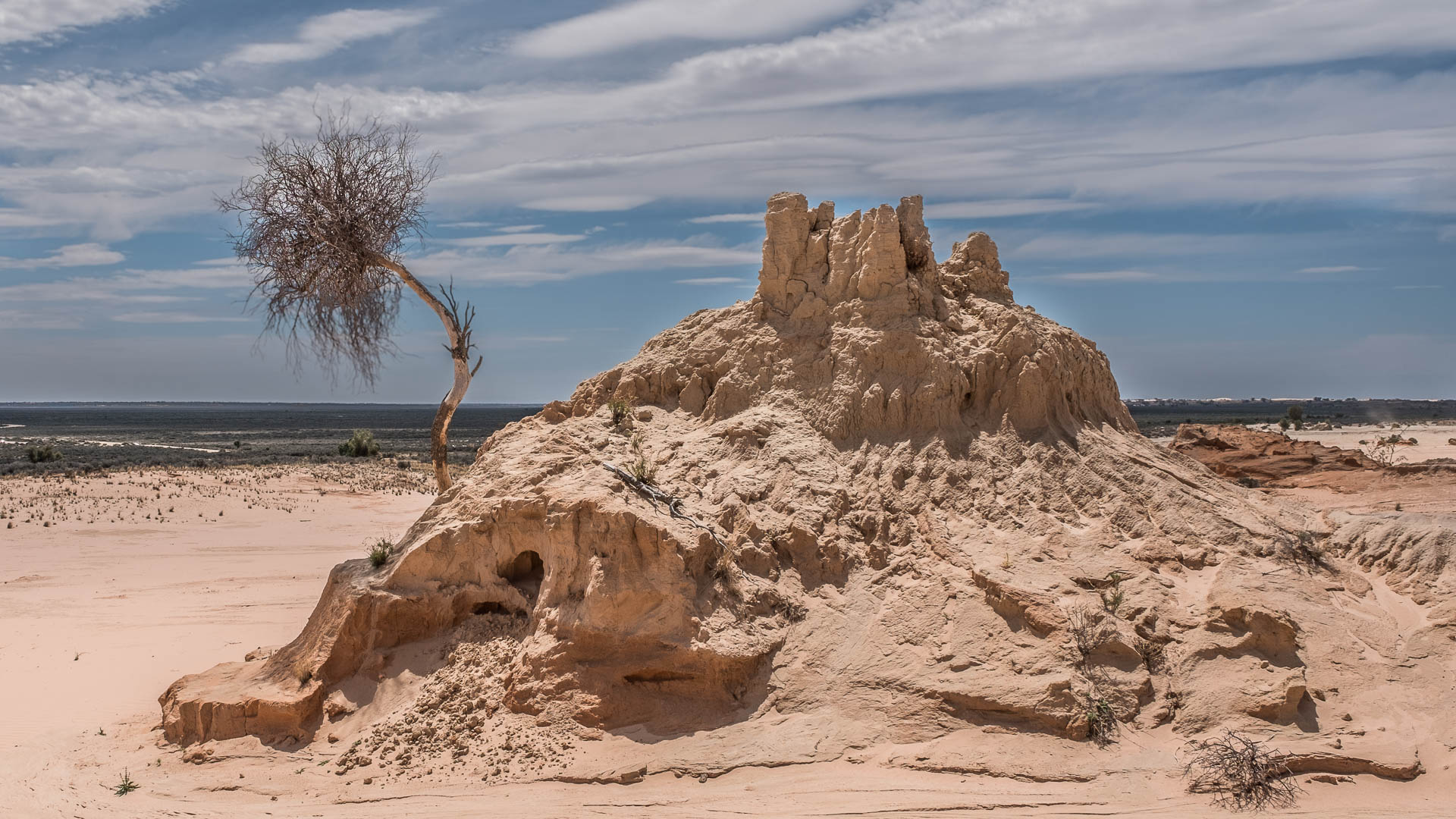
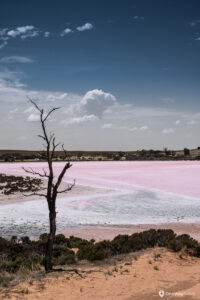
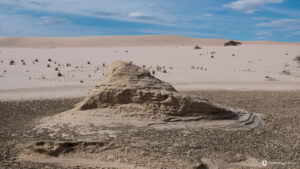
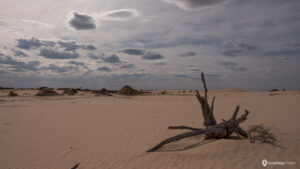
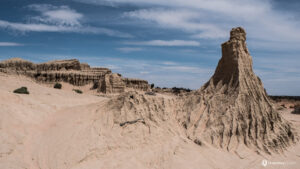
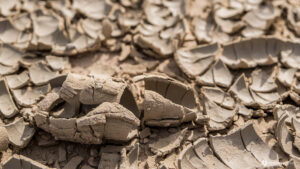
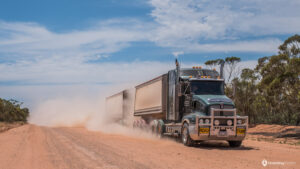
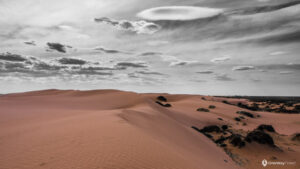
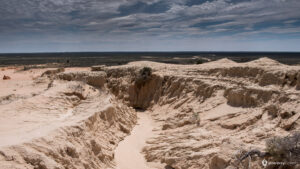
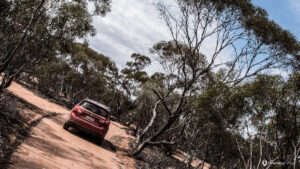
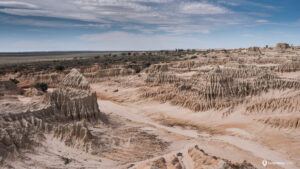
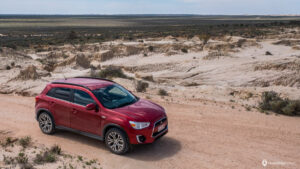
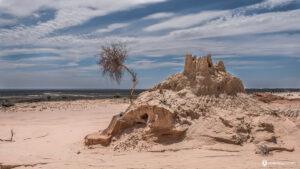
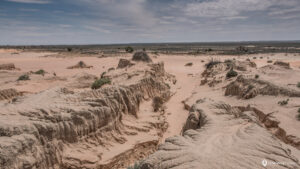
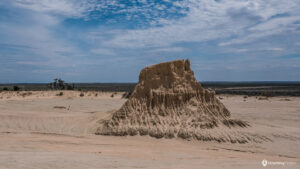
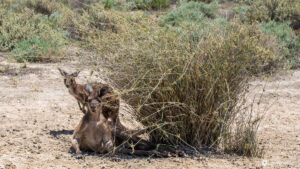
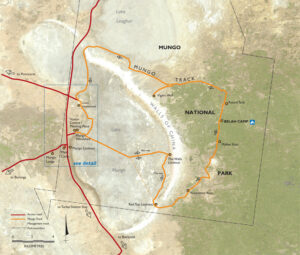
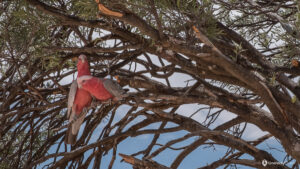
Leave a reply